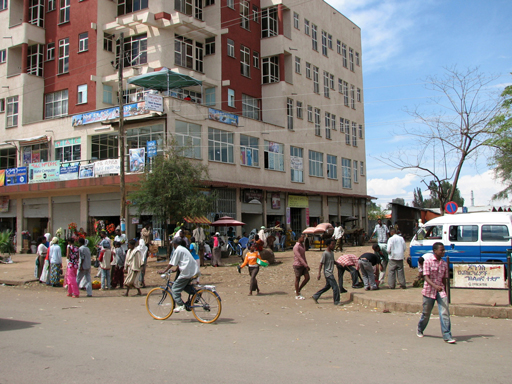6.1 Communities and their characteristics
We have already used the word ‘community’ many times in this Module. A community is a group of people who are connected to each other by geographic location or special interest. They may share a common concern or set of problems.
You read in Study Session 4 that stakeholder engagement means involving stakeholders in decisions. When the stakeholders concerned are community members, the term ‘community engagement’ is used. Community engagement can be defined as a process of working with people in a community to address issues affecting their well-being, in order to achieve common goals (MFSH, 2008).
Community engagement is based on effective communication between people. It also requires respect and trust between the participants, and a common understanding and purpose. Engaging communities in planning and decision making can strengthen their capacity to take action that produces positive changes. It helps to give communities a sense of ownership of projects and interventions, making them more sustainable into the future.
As an urban WASH practitioner you will work with target communities in your locality to improve their health and living conditions. You should be able to identify and address local ideas, concerns and opportunities in your target community and improve their WASH services through appropriate community engagement methods. Communities are at the centre of every WASH project. Since they are the primary targets and the major stakeholders, their engagement in WASH service delivery is vital for ensuring project sustainability and accountability, from the design stage through implementation and also in monitoring afterwards.
Any development work that strengthens the ability of community organisations and groups to build their structures, systems and skills is called community capacity building. Capacity often refers to skills, knowledge and ability (MFSH, 2008). It can also include leadership, infrastructure, time, commitment and resources. Community capacity building is the process of helping people in the community to participate in partnerships and community enterprises and allowing them, through consultation and planning, to be better equipped to define and achieve their objectives.
Community engagement is a complex, ongoing process and involves developing partnerships between practitioners, government officers, service providers and the community. Understanding the diversity and characteristics of the community that you are working with is fundamental to the long-term sustainability of any WASH project.
You learned in Study Session 1 that urban communities are both socially and religiously diverse (Figure 6.1), and that they are likely to include vulnerable groups of people. Different groups may have conflicting interests. Men and women differ in their views on some issues, but not all men share the same view, and neither do all women. Similarly you may find some differences of opinion between older and younger members of the community, but not all young people will share the same views and neither will all older people. Some may have particular needs as a result of a mental or a physical disability, and their interests should also be considered.

Community engagement has been hugely successful in improving rural water supply and sanitation in Ethiopia. There is less experience of community engagement and participation in urban areas, so for similar methods to be successful in the urban context it is crucial to have a good understanding of the diversity and perspectives of the community involved.
Learning Outcomes for Study Session 6
